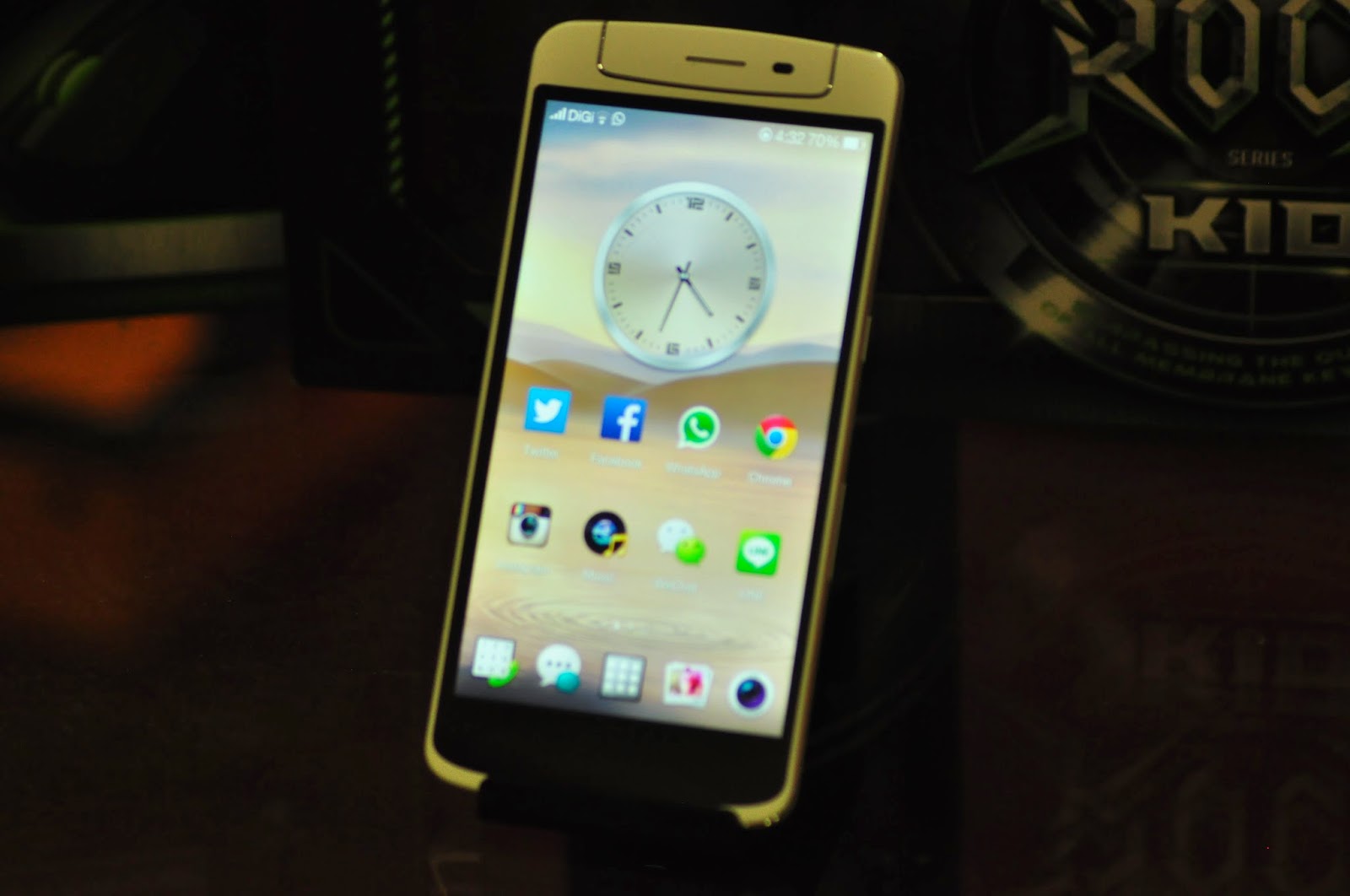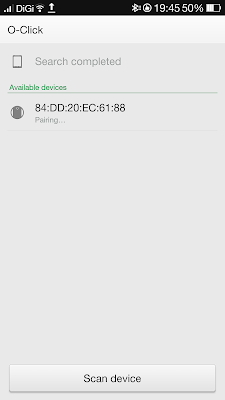OPPO N1 Review - The 13MP Selfie-nator
If you have been paying attention on my blog, you would remember that last month, OPPO has just officially entered the Malaysian market where they launched their N1 flagship alongside with the Find 5 Mini, R1 and Neo. Lucky Ken here has been given the N1 and Neo units for review purposes courtesy of OPPO Malaysia. Without further ado, let's get started with the review.
WHAT'S IN THE BOX KEN?
The smartphone, wall charger alongside with the USB to MicroUSB cable, earphones, a SIM ejector tool and some product information.
TECH SPECS
REVIEW
Before you continue reading this review, I would like to first say that I have been using the N1 as my daily driver for more than 2 weeks now; I believe firmly that in order to find out the ins and outs of a phone, one needs to use it as how it was intended for users when they buy a phone instead of just fiddling around with the device for an hour or so and then calling it a review. So do keep this point of view in mind while reading this review. Oh and forgive me for the weird colour balancing, my camera is acting up a bit.
The N1 comes in a pretty sleek looking box. Like the phone itself, the box has distinct clean lines on the side and a slightly round footprint. Opening up the box, we find the phone itself sitting on the left side of the box along with its accessories on the right. I would have like to have seen some sort of soft foam around the phone just for safety measures but the phone came in tip top condition so there isn't really anything to complain about.
Moving to the bottom of the phone, we find a 3.5mm audio port, a MicroUSB port and the phone's loudspeakers. Compared to the typical loudspeaker that is placed on the back of the phone, I am unsure of which of the two I prefer. While the N1's placement will allow you to sort of control in which direction that sound will be louder a tad, it still faces the same problem like any other phone which has loudspeakers on the back of the phone; the users hand will be blocking the speakers when using the phone in landscape mode. The 5.9 inch N1 could had been the perfect media consumption device that fits in your pocket, if only the speakers weren't blocked. Rants aside, the speakers sound wonderful with adequate loudness when placed correctly.
Unlocking the phone we are greeted with a crisp 1080p display and when calculated, a whopping 373 Pixel Per Inch count. Colour reproduction wise, the IPS display featured on the N1 is top notch without being too colour saturated. The screen also features Gorilla Glass instead of the much more stronger Gorilla Glass 2, but I guess it still does its of job preventing the phone from getting any scratches from subtle movements.
Above of the crisp 1080p display, we find the earpiece and the light/proximity sensor. The ColorOS integrates a lot of interesting software features which I will cover later on. Now if you didn't know any better, you would notice that the line design envelops the top piece of the phone. This is due to the star of the phone, the rotatable camera! Yes, you seen right, a 13MP camera that acts as both the front and back facing camera with a very interesting rotating mechanism. One concern that I had when I first heard of this mechanism was that it might shorten the lifespan of the device as more moving parts almost always equate to higher breakdown rate. Fortunate to say the mechanism feels pretty solid and OPPO ensures that you can rotate the mechanism 40 times a day, 7 years straight, so I'm confident that my past worries were unwarranted. Camera performance wise, I will leave some pictures here and let you guys be the judges yourself. Oh, and don't forget all the high quality selfies one could take! Social media advocates around me absolutely love the unmatched quality of selfies.
| N1 camera photos |
The native launcher in ColorOS features something they call 'Exclusive Space' that currently features a gallery widget and a music player widget with more to come. While this widgets are certainly cool, there are some flaws to them. Like the gallery widget, you have to take a photo using the widget itself in order to have it be featured on the timeline-esque gallery. The music player also lacks something that a lot of users try to do seeing the widget looks like a old scratch disc player, the actual scratching movement to rewind or fast forward the track. ColorOS also has a misoperation prevention feature that does what it say and prevent users from "butt-dialing" which I find in dire need since I prefer not having a screen-lock code.
While not impacting the performance of the N1 too much, ColorOS seems to add much needed software features to add value to the entire package if I dare say. ColorOS focuses a lot on using finger gestures to operate the phone. A lot of people I know user their smartphones in conjunction with a software home button that allows users to operate the phone without actually using the hardware buttons in fear of critical damage to the buttons. The gesture control that OPPO features on the N1 seem to fit the taste of such audience. The gesture controls range from controlling the volume to taking a screenshot which is all pretty handy. The ones I love the most is the double-tap to wake which resembles LG's knock-knock and also the fact that you can set your own gestures to launch actions that are defined by yourself using the gesture panel that is activated by swiping down on the left side of the status bar.
After my very long three paragraph rambling of the ColorOS, if you are still not sold on it, don't fright, as the N1's bootloader is already unlocked. This means that you can flash custom ROMs onto the N1 as it is without going through a headache inducing process found on other devices. The N1 also has an official CyanogenMod port that runs on CM11, so hooray KitKat. If you dislike CM, there aren't a lot of choices other than OmniROM as it seems that the N1 has a less than stellar ROM developer community as you can see from xda-developers. If you didn't understand a single word from this paragraph, don't worry as the ColorOS is a very solid OS itself.
At the back of the N1, we find a very interesting square that works as a touch panel which OPPO has accordingly named it the O-Touch. Users can scroll through news feeds, flip through e-books many more. OPPO has also to an extent integrated the O-Touch to a lot of the applications available natively. For an example, you could tap the back panel to take a photo in the camera app, or start a recording in instant messaging apps like WeChat, Whatsapp and alike. Personally I find the back panel a nice little addition, but sometimes it seems to register touches even though I did not intend to utilize it, so most of the time I have the O-Touch disabled in the settings.
The N1 also comes with a neat little accessory called the O-Click, which connects to the phone via Bluetooth. OPPO markets it as an accessory that you can attach with your bunch of keys. The O-Click can function as a remote to activate your camera shutter, or as an anti-theft device where both the N1 and the O-Click will give out a warning alarm when they are too far apart. While I don't find a need for that, but hey, the more options you get the better right?
Using the N1 as my daily driver, I normally unplug the phone from charging at 6:30 in the morning, and when I come home around 4:00 in the afternoon I usually have 60% or so left. While I am not a power user of any sorts, with the N1's 3610mAh battery capacity, one can get about 4 hours of screen on time which consist of browsing through social media networks and reddit and little amounts of video playback if one were to blaze through full capacity.
Another thing I would like to cover before I forget is that OPPO Malaysia is only bringing in the 16GB model of N1. While I am no CEO, I think that it is a very weird decision. Even though it says 16GB on the spec sheet, actual space available to users is only about 10GB. For those who have an extensive MP3 library at their disposal, I'm afraid that the 10GB usable space is pretty unacceptable. Not forgetting that the N1's ability to take high quality photos, which in terms reflect in taking up more space in the phone; avid mobile photographers might also be disappointed with the very limited space. Sure OPPO offers 5GBs worth of cloud storage with its O-Cloud app, but I'm afraid that does not really help the situation. While I am not always shouting "rar rar give me SD card slot", the N1 is in dire need of more storage since there is no indication that OPPO Malaysia would be bringing in the 32GB model.
CONCLUSION
After spending almost 3 weeks with the OPPO N1, I have come to love what OPPO has done to add value to their devices via ColorOS and the good battery life. The rotating camera is also a very big selling point with it being able to take high quality photos at almost any given angle.Despite having apparent problems like limited storage and questionable loudspeaker placement, I think the N1 is well worth the RM1798 price tag; which is on-par with phablets of its class.
That marks the end of this review! What do you think of my first ever smartphone review? Where do I need to improve and what important details have I left out? Do send your feedback over to kenyeohsl@gmail.com or just leave a comment down below. Greatly appreciate it and hope to see you on the site again!
.png)































![How to root your OPPO Find 7 (X9076) & Find 7a (X9006) Stock/Custom Recovery [Updated for ColorOS 2.0]](https://blogger.googleusercontent.com/img/b/R29vZ2xl/AVvXsEgCiB_-MGvCpPXX28qC4nLbxmdHrFKSqgCPOhx8I8eEC180X3VC_o9YMaLzb80SNqq1aKDarK6y1daaLF6140d60XjT9ZcOd1_PsgQJvRYxXknJW-KNhnfJq27gUvYWa7M2PhUJy-pLPU_g/s72-c/root+guide.jpg)
Great review :D But the lack of storage is a no-no for me :( too bad cause i love all the feature but the lack of storage is really really disappointing :(
ReplyDelete